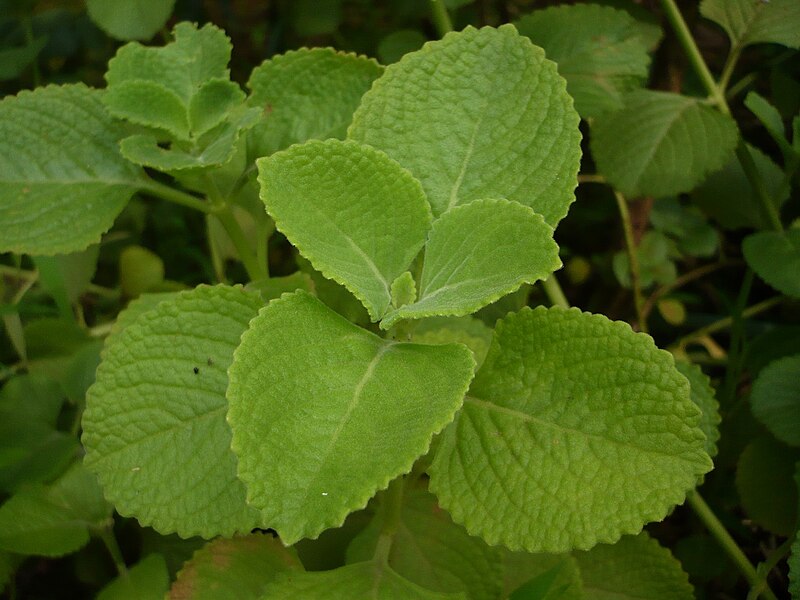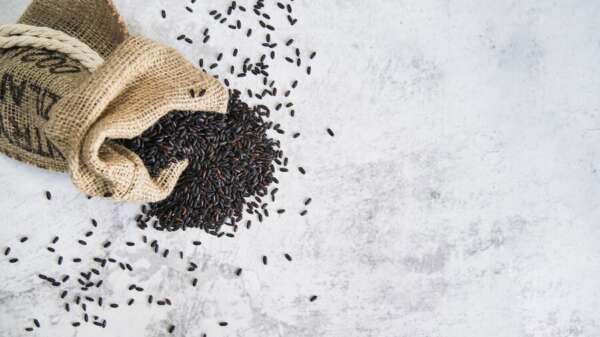Plectranthus Cyaneus, scientifically known as Coleus aromaticus, is a well-known herb in traditional Indian medicine, particularly Ayurveda. It goes by various names in different regions, including “Karpooravalli” in Tamil, “Indian Borage” or “Country Borage” in English, and “Patharchur” in Hindi. This herb is celebrated for its numerous health benefits and versatile uses, making it a popular choice for natural remedies. Learn about Plectranthus Cyaneus, its health benefits, potential side effects, and its English name. Discover how this plant can improve well-being and any precautions to consider. Perfect for those exploring natural remedies and botanical insights.

Introduction to Plectranthus Cyaneus
Plectranthus Cyaneus is a perennial herb that thrives in tropical and subtropical climates. It is commonly found in home gardens and is cultivated for its medicinal properties. In addition to its therapeutic uses, the leaves of this plant are used in cooking to add unique flavor to various dishes. It is an important plant in traditional medicine systems, including Ayurveda, Siddha, and traditional Chinese medicine, and is used by Ayurvedic practitioners, home remedy enthusiasts, and herbalists.
Plectranthus Cyaneus Health Benefits
The health benefits of Plectranthus Cyaneus are numerous and include:
- Respiratory Health: It acts as a natural expectorant, helping to clear mucus from the airways, making it effective in treating coughs, colds, asthma, and bronchitis.
- Antibacterial Properties: The plant exhibits antibacterial and antimicrobial properties, aiding in fighting infections, particularly those affecting the respiratory tract.
- Digestive Aid: It helps alleviate stomach discomfort, indigestion, and gas.
- Anti-inflammatory: Its anti-inflammatory properties help reduce swelling and inflammation associated with conditions like arthritis.
- Skin Care: The leaves can be applied topically to soothe skin conditions such as insect bites, rashes, and minor burns.
- Fever Reducer: Traditionally used to lower fever in children by applying a poultice of crushed leaves to the forehead.
- Antioxidant Rich: A good source of antioxidants, it helps combat free radicals and oxidative stress in the body.
- Pain Relief: Used to alleviate headaches, toothaches, and general pain.
- Culinary Uses: Leaves are used in cooking to enhance the flavor of various dishes.
English Name and Other Common Names
Plectranthus Cyaneus is commonly known as Indian Borage or Country Borage in English. Other common names include Karpooravalli in Tamil and Patharchur in Hindi. It is also referred to by its scientific name, Coleus aromaticus.
Types of Plectranthus
Plectranthus is a diverse genus with various species, including:
- Plectranthus verticillatus: Commonly known as Swedish Ivy.
- Plectranthus barbatus: Commonly known as Coleus forskohlii.
- Plectranthus scutellarioides: Often referred to as Coleus, popular for its ornamental value.
Plectranthus Cyaneus Uses
Plectranthus Cyaneus is used in various forms:
- Fresh Leaves: Chewing fresh leaves for coughs and colds or using them in cooking.
- Herbal Decoction: Boiling leaves in water to make a decoction for respiratory issues.
- Poultice: Applying crushed leaves topically to soothe skin irritations or reduce fever.
- Essential Oil: Using the essential oil for massage or steam inhalations.
- Syrup: Consuming Plectranthus Cyaneus syrup for coughs and colds.
- Powder: Consuming dried leaves ground into a powder with honey or warm water.
Plectranthus Near Me: Cultivation and Availability
Plectranthus Cyaneus is commonly found in home gardens and is easily cultivated in warm and humid conditions. It grows abundantly in regions like India, Sri Lanka, and parts of Southeast Asia. It can also be spotted growing wild along roadsides and in waste areas.
Potential Side Effects and Precautions
While Plectranthus Cyaneus generally has a good safety profile, it is important to be aware of potential side effects:
- Digestive Issues: High doses might cause stomach upset, nausea, vomiting, or diarrhea.
- Bleeding Risk: It might interact with blood-thinning medications, increasing the risk of bleeding.
- Pregnancy and Breastfeeding: Best avoided due to limited data on its safety.
- Allergic Reactions: Rare but possible allergic reactions.
Important Points to Remember
- Consult Your Doctor: Always consult a healthcare professional before using Plectranthus Cyaneus, especially if you have underlying health conditions or are pregnant or breastfeeding.
- Limited Research: More scientific research is needed to fully understand its safety and efficacy.
- Start Low and Slow: Test on a small area of skin if using topically, and begin with small amounts if consuming.
- Seek Professional Advice: Discontinue use and consult a healthcare professional if you experience any concerning side effects.
Plectranthus Cyaneus, with its rich history in traditional medicine, remains a valuable herb for promoting health and well-being. Its versatility in treating respiratory issues, skin care, and enhancing culinary dishes solidifies its place in herbal remedies. However, it is crucial to use Plectranthus Cyaneus with care, respecting recommended dosages and consulting experts when necessary, to fully benefit from its potential advantages while avoiding any possible drawbacks.
Whether you are an enthusiast of natural remedies or seeking botanical insights, Plectranthus Cyaneus offers a wealth of benefits worth exploring.
When and Where is Plectranthus Cyaneus Found?
When: Plectranthus Amboinicus is a perennial herb that can be found year-round in regions with a tropical and subtropical climate. It thrives in warm and humid conditions, making it abundant in countries like India, Sri Lanka, and parts of Southeast Asia.
Where: Plectranthus Amboinicus is commonly found in home gardens and is cultivated for its medicinal properties. It can also be spotted in the wild, often growing as a weed along roadsides and in waste areas.
Who Uses Plectranthus Cyaneus?
Plectranthus Amboinicus has a long history of use in traditional medicine systems, including Ayurveda, Siddha, and traditional Chinese medicine. It is valued for its health-promoting properties and is widely used by:
- Ayurvedic Practitioners: Ayurvedic physicians frequently prescribe Plectranthus Amboinicus for various ailments due to its diverse therapeutic benefits.
- Home Remedy Enthusiasts: Many households in India and neighboring countries grow Plectranthus Amboinicus for its use in home remedies and as a culinary herb.
- Herbalists: Herbalists and natural medicine practitioners incorporate Plectranthus Cyaneus into their treatments and preparations.
Plectranthus Cyaneus health benefits
The popularity of Plectranthus Cyaneus can be attributed to its impressive array of health benefits, which include:
1. Respiratory Health: Plectranthus Cyaneus is renowned for its efficacy in relieving respiratory ailments. It acts as a natural expectorant, helping to clear mucus from the airways. It is commonly used for treating coughs, colds, asthma, and bronchitis.
2. Antibacterial Properties: Plectranthus Cyaneus exhibits antibacterial and antimicrobial properties, making it effective in fighting infections, including those of the respiratory tract.
3. Digestive Aid: It aids digestion and can be used to alleviate stomach discomfort, indigestion, and gas.
4. Anti-inflammatory: The anti-inflammatory properties of Plectranthus Cyaneus make it useful in reducing swelling and inflammation associated with conditions like arthritis.
5. Skin Care: Plectranthus Cyaneus can be applied topically to soothe skin conditions such as insect bites, rashes, and minor burns.
6. Fever Reducer: It is traditionally used to lower fever in children by applying a poultice of crushed leaves to the forehead.
7. Antioxidant Rich: Plectranthus Cyaneus is a good source of antioxidants, which help combat free radicals and oxidative stress in the body.
8. Pain Relief: It may be used to alleviate headaches, toothaches, and general pain.
9. Culinary Uses: Plectranthus Cyaneus leaves are also used in cooking, adding a unique flavor to various dishes.
Which Parts of Plectranthus Amboinicus are Used?
Plectranthus Cyaneus is valued for its leaves, which are the primary part used for medicinal and culinary purposes. The leaves have a distinct aroma and flavor, which enhances the taste of dishes.
How is Plectranthus Amboinicus Used?
Plectranthus Cyaneus can be used in various forms:
1. Fresh Leaves: Chewing fresh leaves is a common method for alleviating coughs and colds. The leaves can also be used in cooking, similar to other culinary herbs.
2. Herbal Decoction: A decoction made from Plectranthus Cyaneus leaves is used to treat respiratory issues. Simply boil the leaves in water until it reduces to half, strain, and drink.
3. Poultice: Crushed leaves can be applied topically as a poultice to soothe skin irritations or reduce fever.
4. Essential Oil: Plectranthus Cyaneus essential oil is available and can be diluted and used for massage or added to steam inhalations.
5. Syrup: Plectranthus Cyaneus syrup is a commercially available preparation used for coughs and colds.
6. Powder: Dried Plectranthus Cyaneus leaves can be ground into a fine powder and consumed with honey or warm water.
Plectranthus Cyaneus Side Effects
While Plectranthus cyaneus, also known as Swedish Ivy or Silver Spur Flower, generally has a good safety profile and is used in traditional medicine for various ailments, it’s important to be aware of some potential side effects, especially when consuming it in large quantities or for prolonged periods. Here’s what we know:
Potential side effects:
- Digestive issues: High doses might cause stomach upset, nausea, vomiting, or diarrhea.
- Bleeding risk: Some studies suggest it might interact with blood-thinning medications, potentially increasing the risk of bleeding.
- Pregnancy and breastfeeding: Due to limited data, it’s best to avoid using it during pregnancy and breastfeeding as a precaution.
- Allergic reactions: Although rare, allergic reactions to Plectranthus cyaneus can occur.
Important points to remember:
- Consult your doctor: Always talk to your doctor before using Plectranthus cyaneus, especially if you have any underlying health conditions, take medications, or are pregnant or breastfeeding.
- Limited research: While some studies have shown potential benefits, more research is needed to fully understand its safety and efficacy.
- Start low and slow: If using it topically, test it on a small area of skin first to check for any allergic reactions. When consuming, begin with a small amount and gradually increase to monitor your body’s response.
- Seek professional advice: If you experience any concerning side effects, stop using it and consult a healthcare professional immediately.
Important Facts About Plectranthus Cyaneus:
1. Precautions: While Plectranthus Cyaneus is generally safe when used in recommended amounts, excessive consumption or application can lead to adverse effects. It’s advisable to consult a healthcare professional or Ayurvedic practitioner before using it as a remedy, especially during pregnancy or for young children.
2. Allergic Reactions: Some individuals may be allergic to Plectranthus Cyaneus. If you experience any adverse reactions like itching, rashes, or swelling, discontinue use immediately.
3. Culinary Uses: In addition to its medicinal properties, Plectranthus Cyaneus leaves are used to flavor traditional dishes in South Indian cuisine, adding a unique taste to curries and chutneys.
4. Scientific Research: While Plectranthus Cyaneus has a rich history in traditional medicine, more scientific research is needed to validate its various health claims fully.
In Conclusion: The Wonders of Plectranthus Amboinicus
Plectranthus Cyaneus, with its long history of use in traditional medicine, continues to be a valuable herb for promoting health and well-being. Its versatility, from respiratory relief to skin care and culinary uses, has solidified its place in herbal remedies. However, it’s crucial to use Plectranthus Cyaneus with care, respecting recommended dosages and consulting experts when necessary, to fully benefit from its potential advantages while avoiding any possible drawbacks.


